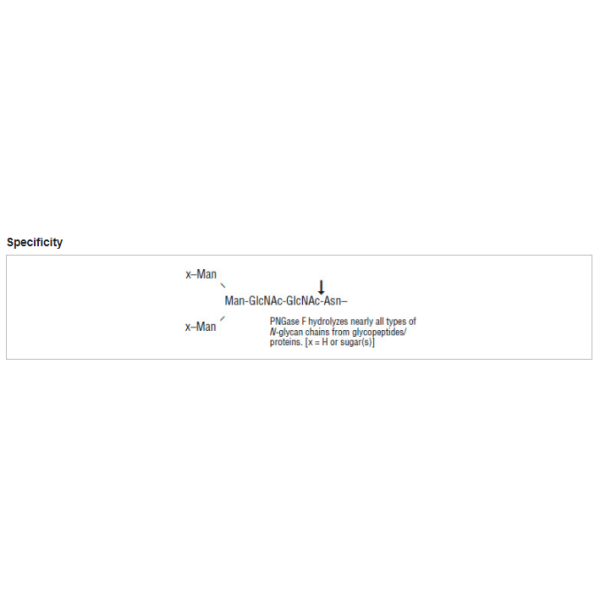P0708L, PNGase F, recombinant - 75.000 units
PNGase F is the most effective enzymatic method for removing almost all N-linked oligosaccharides from glycoproteins. PNGase F, Recombinant is a recombinant amidase, which cleaves between the innermost GlcNAc and asparagine residues of high mannose, hybrid, and complex oligosaccharides.
PNGase F is the most effective enzymatic method for removing almost all N-linked oligosaccharides from glycoproteins. PNGase F, Recombinant is a recombinant amidase, which cleaves between the innermost GlcNAc and asparagine residues of high mannose, hybrid, and complex oligosaccharides.
- Recombinant enzyme; guaranteed endoglycosidase F1-, F2- or F3-free
- Leaves N-glycan core oligosaccharides intact and suitable for further analysis
- ≥ 95% purity, as determined by SDS-PAGE and intact ESI-MS
- Stored in 50% glycerol
- Optimal activity and stability for up to 24 months
- Can be used under native or denaturing conditions
Product Source
Cloned from Elizabethkingia miricola (formerly Flavobacterium meningosepticum) and expressed in E. coli.
| Price | 4.614,00 RON (preturile sunt fara TVA) |
|---|---|
| Description |
PNGase F is the most effective enzymatic method for removing almost all N-linked oligosaccharides from glycoproteins. PNGase F, Recombinant is a recombinant amidase, which cleaves between the innermost GlcNAc and asparagine residues of high mannose, hybrid, and complex oligosaccharides.
Product Source Cloned from Elizabethkingia miricola (formerly Flavobacterium meningosepticum) and expressed in E. coli. |

 English
English




